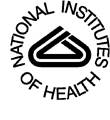National Institutes of Health (NIH)
 Founded in 1887, the National Institutes of Health (NIH) today is one of the world's foremost medical research centers, and the Federal focal point for medical research in the United States. The NIH, comprising 27 separate Institutes and Centers, is one of eight health agencies of the Public Health Service which, in turn, is part of the US Department of Health and Human Services.
Founded in 1887, the National Institutes of Health (NIH) today is one of the world's foremost medical research centers, and the Federal focal point for medical research in the United States. The NIH, comprising 27 separate Institutes and Centers, is one of eight health agencies of the Public Health Service which, in turn, is part of the US Department of Health and Human Services.
Throughout the fiscal year of 2007 the NIH’s supported stem cell research through the following methods:
- Human non-embryonic stem cell research:
Approximately $ 203.5 Million - Human embryonic stem cell (hESC) research:
Approximately $42 Million
The NIH also supports the United States’ National Stem Cell Bank located at WiCell Research Institute, Wisconsin. The duties of the Bank include:
- Ready source of hESCs in one location
- Compare and expand hESCs available to NIH-supported scientists
- Ensure consistent quality control
- Reduce cost to obtain cells listed on the NIH Stem Cell Registry
The National Stem Cell Bank is currently distributing 13 of the 21 hESC lines eligible for U.S.A. Federal Funding. Negotiations are underway for agreements to permit the Bank to distribute additional lines from the providers.
The NIH’s National Institute of General Medical Sciences (NIGMS) funds exploratory centers for hESC research, incorporating the P20 (Exploratory Center) awards that are currently supporting multi-investigator teams to conduct research using hESCs. The research is being conducted at the following locations:
- Yeshiva University (New York City)
- The Burnham Institute (California)
- Mount Sinai School of Medicine (New York City)
- University of Michigan Medical Center
- University of Washington/Fred Hutchinson Cancer Research Center
The Exploratory Center P20 Grants have led to Program Project (P01) grants at the Baylor College of Medicine (Texas) and the University of Washington.
Centers of Excellence
The NIH Is Funding Centers of Excellence for Translational Stem Cell Research, which are comprised of multidisciplinary teams of stem cell experts, clinical researchers, and transplant surgeons. The goal of the Centers is to speed translation of basic knowledge to clinical therapies for human disease and Center scientists are testing adult and embryonic stem cell therapies for many diseases including blood cancers, kidney disease, and neurological disorders. The Translational Centers are at UC-Davis (California) and Northwestern University (Illinois).
The NIH is also funding short-term courses in hESC Cell Culture Techniques at:
- Burnham Institute (California)
- Children’s Hospital of Orange County (California)
- Jackson Laboratory (Maine)
- Technion-Israel Institute of Technology (held in Baltimore, Maryland)
- University of Georgia
- University of Minnesota
- University of Pittsburgh/Magee-Women’s Research Institute (Pennsylvania)
Expanding research using pluripotent stem cells
The NIH is Implementing President Bush’s Executive Order to expand research using pluripotent stem cells from alternative sources via the follow means:
1) The NIH Has Issued Funding Opportunity Announcements (FOAs) to Support Research Using Alternative Sources of Pluripotent Stem Cells:
Two Program Announcements (PA) [Human Pluripotent Stem Cell (hPSC) Research Using Non-Embryonic Sources - R01 and R21] have been published in the NIH Guide for Grants and Contracts since December 13, 2007. They can be found in the NIH Guide as PA-08-043: Human Pluripotent Stem Cell (hPSC) Research Using Non-Embryonic Sources (R01) and PA-08-044 Human Pluripotent Stem Cell (hPSC) Research Using Non-Embryonic Sources (R21). Potential applicants will prepare applications for submission for the next round of standard grant submission dates (February 5 and 16, 2008). Currently, 14 NIH Institutes and Centers (ICs) are participating in the R01 PA and 13 ICs are participating in the R21 PA.
The Notice (NOT) for Administrative Supplements to existing NIH-supported grants [NIH Administrative Revisions for Human Pluripotent Stem Cell (hPSC) Research Using Non-Embryonic Sources] was published in the NIH Guide for Grants and Contracts on January 18, 2008. The NOT can be found in the NIH Guide as NOT-NS-08-013: NIH Administrative Revisions for Human Pluripotent Stem Cell (hPSC) Research Using Non-Embryonic Sources. Currently, 8 ICs are participating in the NOT. Potential applicants have until April 1, 2008 to request supplemental funding.
2) The NIH Will Rename the NIH Stem Cell Registry as the Human Pluripotent Stem Cell Registry
There is a scientific definition of pluripotency which is generally accepted. NIH is developing a list of properties that pluripotent cells would display. Scientists submitting lines for inclusion on the new NIH Human Pluripotent Stem Cell Registry must provide evidence that these criteria have been met.
Once the list of required criteria is finalized, NIH will post it and the application form on the NIH Stem Cell web site. NIH will then begin accepting applications from scientists who wish to nominate their lines for inclusion on the Registry. Such lines should be obtained without harm to the embryo.
3) The NIH Will Hold A Human Pluripotent Stem Cell (hPSC) Research Symposium to Prioritize Research with the Greatest Potential for Clinical Benefit
The research symposium is entitled “Challenges and Promise of Cell-Based Therapy,” and will be held in the Natcher Conference Center on the NIH campus in Bethesda, Maryland on May 6, 2008. Scientists in attendance will work to summarize the state-of-the science, notable milestones, and general impediments to cell-based therapy.
4) The NIH Will Convene A State-of-the-Science Workshop on Alternative Methods to Derive Human Pluripotent Stem Cells
The NIH Stem Cell Task Force is planning this workshop for Fall of 2008. While the focus of the workshop is still under discussion, it is likely to focus on induced pluripotent stem cells, their properties and potential.
